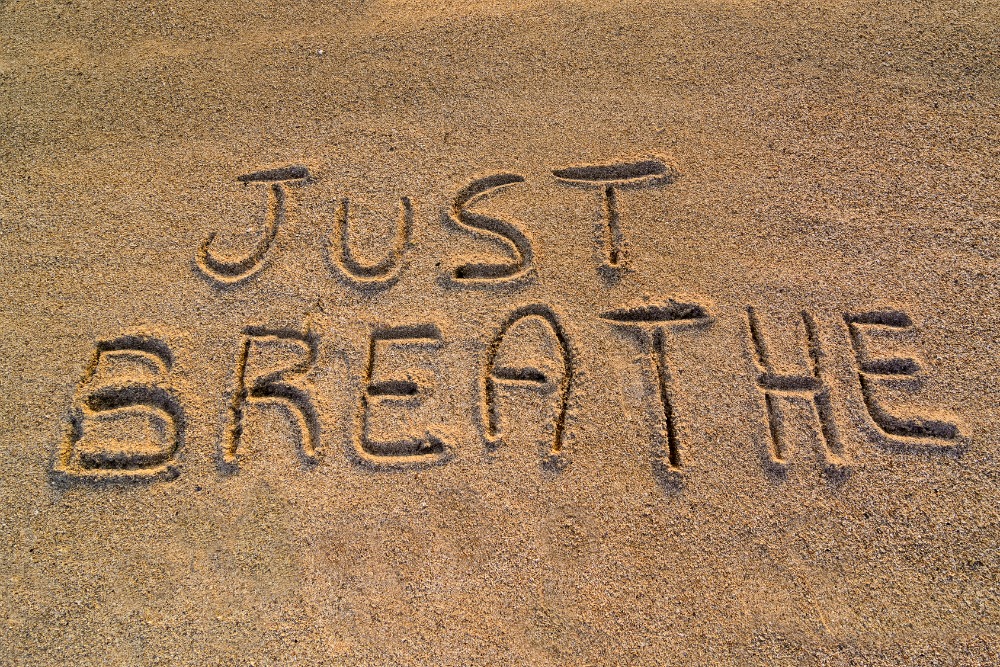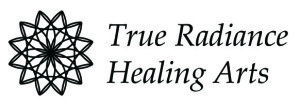tools to make life easier
4 Ways to Cultivate Gratitude
/in Healing, Life Skills, Uncategorized/by Susan Pullen Practicing gratitude can help you feel happier, improve your relationships, and strengthen resilience.
Practicing gratitude can help you feel happier, improve your relationships, and strengthen resilience.
Our natural tendency is to focus on what we aren’t enjoying in our life, so practicing gratitude helps us to also notice and experience the good in our lives.
Personally, as I’ve kept a gratitude journal it has helped me to realize that sometimes good things happen without my having to create or control them.
The most important part of any practice is to allow yourself, to the best of your ability, to actually feel the gratitude. There are times when it can seem harder to feel our deep appreciation for the good things – it’s natural for us to have those periods. Practicing gratitude helps us to reconnect with the part of ourselves that can experience joy and appreciation.
When Feeling Gratitude is Hard
Try asking yourself, “What would it be like if I could feel gratitude?” You’re allowed and encouraged to use your imagination here, or perhaps remember a time when you felt that way.
You can also ask yourself, “What would it be like if I could feel gratitude even 2% more?”
Even asking these questions with no answer will help make space for an answer to come over time.
Sometimes it seems unfair for us to enjoy life when others we know are suffering. Out of loyalty to others we keep a lid on our own happiness.
If this resonates for you, try asking yourself, “Is this what this person would want for me?” and “Does it actually lighten their suffering when I don’t enjoy my life?” See if you can give yourself permission to honor their circumstances and also enjoy your own.
4 Ways to Practice Gratitude
There are many ways to practice gratitude – here are 4 options.
Keep a Gratitude Journal
A gratitude journal can be a literal journal where you write down 1-3 things you’re grateful for each day. Some people prefer to keep a visual gratitude journal – taking a photo to represent something you’re appreciating today.
I recommend aiming for 3 things – 3 new things – each day. You can be small and specific, so it stays fresh. For example, instead of writing “I’m grateful for my friends,” you would write, “I’m grateful for Anna sending me a note today.”
If coming up with 3 things feels challenging or keeps you from doing it, simply dial it back to noting 1 thing each day (or most days). Remember it can be a little moment or something obvious we take for granted (like, “I’m grateful for indoor plumbing”).
Go for a Gratitude Walk
Head out on a walk around the neighborhood, the park, or even around the house. As you walk, greet each thing you see and say, “thank you.”
“Thank you, tree.”
“Thank you, wind.”
“Thank you, pavement, for easing our drive.”
“Thank you, mailbox, for receiving my mail.”
“Thank you, telephone wires.”
Write a Thank You Note
Think of a person who has made a difference in your life – maybe someone who doesn’t even know that they’ve had this positive impact for you.
Spend a few minutes writing them a letter about what they did for you, what it meant to you, and thanking them.
You could simply mail this letter, but we could all use more meaningful connection these days. I encourage you to set up a time to read this letter to them – maybe on Zoom or FaceTime where you can see each other.
Do a Gratitude Meditation
Settle yourself for a meditation. This can be as long or as short as you like. Take a few breaths.
If you can, drop your awareness down into your heart.
Allow moments, people, things, even qualities in yourself, to come to mind as you inhale.
On the exhale, say out loud or in your mind, “Thank you.”
Mining for Gratitude
If you’re having a hard time thinking of things to be grateful for, here are some places to look:
- What sensations or physical experiences are you grateful for? Perhaps the warmth of a hot bath, or the feeling of your cat in your lap, or the smell of your favorite meal, or the satisfying feeling of muscles stretching and supporting.
- What qualities and skills are you grateful for? What are things you are able to do or character traits that you appreciate in yourself or others?
- What are you grateful to others for? Where have you experienced a moment of connection, support, or a shared smile?
- What are you grateful for spiritually? Are there spiritual resources you appreciate in your life? Do you ever have a sense of connection with nature or the divine that you appreciate?
For more on practicing gratitude, see our guide to Cultivating a Gratitude Practice below.
Whatever practice works for you, I hope you will take a few minutes to see how cultivating gratitude works for you.
With gratitude for you for reading this post,
Susan

Feeling Overwhelmed? Try This.
/in Guidance, Life Skills/by Susan PullenWe all have times when things feel overwhelming. Whether it’s a specific part of our lives or life in general, it can feel like more than we can handle. During these moments, it’s hard to know where to start or if we’re even capable of getting through it.

This sense of having more to deal with than we can manage can come from a major life event or just from seeing the whole scope of a project and all there is to do at once. In response, our brain goes into survival mode, where creativity, resourcefulness, and the ability to strategize are sacrificed.
When it feels like it’s all too much, here are a few strategies to help make it manageable:
1. Breathe
Focusing on the breath is a simple but effective tool when you get caught up in the enormity of something. Attending to your breath helps you to relax. Physiologically, when your breathing deepens and you relax, it sends a message to the brain that you are safe. It also brings more oxygen to the brain, allowing you to think more clearly. Bringing focus to your breath returns your attention to the present moment, where you can identify your next step.
2. Capture and Contain
For many people, writing down all the loose ends vying for attention can help create the mental space to actually think. Try jotting down all the things swimming around in your head that you “need to do.” Don’t stop there; once you’ve captured everything on paper, try drawing a box, circle, or other closed shape all the way around it. Our mind responds to visual information, and putting a container around these tasks sends a signal to the mind that this is a “complete set.” Otherwise, your mind will likely keep searching for—and offering up—more things you “need to” deal with. (Are you still breathing?)
3. Take Stock
Give yourself a moment to acknowledge the action you’ve already taken or set in motion. Make a quick list of the resources and skills you have available to you that will help. In some situations, it can be helpful to focus on what’s known right now (instead of what might happen).
4. Find a Bite-Sized Chunk
If you made a Capture and Contain list, you might have noticed that not everything on the list can be done now. Because of the natural order of things (this must happen before that) or because of where you are right now (for example, sitting in front of the computer and not out running errands), it’s likely that some items on the list aren’t ready to be done right now. For the moment, let those go. What’s one small thing you can do right now to take a step closer to getting one thing done? It might be finding a phone number, sending off a quick email, identifying a piece of needed information, or some other relatively small task. It’s OK to start with something easy.
 5. Focus on the Very Next Step
5. Focus on the Very Next Step
There’s a bit of mental discipline required in staying with the very next step. Our mind can race down the path far ahead, noticing all of what must be done, the entire sequence, all at once. When you notice that your attention has wandered into the future, gently bring yourself back to the present by again returning to your breath. What’s your very next step?
6. Tap Your Resilience
Take a moment to think of a challenging time you’ve been through. Maybe it’s a situation where you or others were surprised at what you were capable of handling. Acknowledge yourself for having accomplished this, taking note of the skills and abilities you brought to the situation. Remember that you are capable of handling tremendous feats and difficulties.
Still breathing?
We have the capacity and strength to overcome great obstacles and accomplish miracles. These strategies can help.
When What You Want Scares You
/in Life Purpose, Life Skills, Making Changes/by Susan Pullen
When I was first offered the opportunity to teach a workshop years ago, my heart said, “oh yes!” but my head said, “oh no!” Deep within me it felt absolutely right to be leading a workshop, but my mind was full of fears and doubts…
“Who am I to lead a group, to present myself as an expert?”
“What if I stand up in front of the room and forget everything?”
“What if they hate it? What if they get up and walk out in the middle?”
Like many people in this country, I dreaded public speaking when I was younger (ok, true confession, part of me still gets a bit nervous). Even the thought of standing up in front of the class and delivering a short talk at school made me queasy. It was like all the blood would drain out of my brain, rendering it useless, and into my face, lighting me up like a beet.
Given this, you might think I’d be the last person to sign myself up to lead a group voluntarily. Yet, I couldn’t deny that teaching also felt absolutely right. There was a quiet voice in my core telling me that leading groups and workshops was one of my gifts and part of my purpose. How could I say no to that?
It turns out that I actually LOVE facilitating groups and leading workshops, even if it still sometimes scares me. When I teach a group – even one that goes late into the evening – I feel energized and even a bit wound up afterwards. But I would never have discovered this if I had listened to the voice of fear and declined the opportunity.
Over the years as I have worked with more and more people, I have found a common thread in this experience: many of us want to, or even feel called to, do something that scares us.
In fact, the more we feel drawn to undertaking a particular path, the more fear it can stir in us. This path could be related to our career, getting involved in a relationship or making more friends, having a baby, going back to school, or leaving a relationship. It’s not always this way, of course. There are times when we feel compelled in a direction that feels natural to us. Most often it seems there’s a blend, an irrational mix of comfort, confidence, and terror evoked by our desires.
One reason for this lies in the degree of risk we perceive to be involved. If an activity feels like part of our life purpose, it can be thrilling but also add pressure. When it feels like the stakes are high, fear and doubt are often close by. We can be haunted by questions like, “What if it doesn’t work out? What if I’m wasting my time? What if it turns out I’m no good at this? What then?”
Now that I have more faith, I’ve realized that, as long as I do my part, if I’m on the right path then my success is inevitable. Doing my part means being active, taking steps toward accomplishing my dreams. It means braving up and following the little inner voice to do even the things that scare me.
On my own journey and in my work with hundreds of people, there are strategies that I’ve found helpful in persevering past doubt. Here are a few of them:
- Rehearse Ease. Whenever we do something unfamiliar, the brain’s threat watchdog, the amygdala, goes on alert. In fact, the amygdala scans all incoming information from our senses and from the cortex. Since the cortex is spectacular at imagining things, the amygdala reacts to scenarios we are imagining as well as events that are transpiring in real time. That’s why even *thinking about* doing something that scares you can elicit the fight, flight, or freeze response (otherwise known to some of us as the “eat, binge watch TV reruns, or get lost in FaceBook” response). Luckily, we can use this to our advantage by imagining ourselves carrying out the activity with ease. This works best if you imagine it just a few minutes at a time, frequently (daily works well), and in as much sensory detail as possible.
- Break it Down. Another way to help avoid triggering the amygdala is to break down a goal into small, manageable steps. Again, the key is to take action a few minutes at a time, repeated over time. This repetition creates and reinforces a new neural pathway, which is the structure of habit in the brain. Make a date with yourself to do just a little bit toward your goal most days. If you find you’re not getting to it, make the step even smaller. Over time, you’ll find yourself feeling encouraged by the progress you’re making, which makes it even more appealing to keep going. (You can read more about this in the blog post, The Neuroscience of Changing Habits.)
- Focus on the Supportive Inner Voice. We typically have many aspects of ourselves that contribute to our inner dialogue. Often there will be a part of us that knows we are on the right track and fully capable of achieving our goal. Simultaneously, there will be other parts of us who express doubts, perhaps dredging up past failures and generally raining on our parade. It can help to “talk back” to the fearful voices by saying to yourself, “Thank you for your input, and right now I’m choosing to listen to the Part of Me That Knows.” Over time, this supportive inner voice will get clearer and louder, while the voices of fear and doubt will lose gusto.
- Collect Reasons to Keep Going. The voice of fear and doubt will offer us a myriad of reasons to give up. Like a detective building a case, start gathering evidence that you’re on the right track. This might include positive feedback and compliments from friends, family, clients, or others. At times it can be easier to accept someone else’s positive evaluation of us than it is to accept our own. Other people see gifts and talents in us long before we are ready to own them. For me, my case for continuing also included intuitive information and night dreams that encouraged me.
- Build Trust. One way we can begin to open doors to new ways of thinking is to ask ourselves the same question over and over. Try playing with the question, “What would it be like to trust that things will work out?” or “What would it be like to trust that I’m capable of doing this?” See if you can feel that trust, even 2% more than you did a moment ago. Our plans don’t always materialize the way we had hoped – sometimes things work out in a way that’s even better. Trusting that things will work out means trusting that, even if it doesn’t transpire the way you imagined it would, in the long run there will be aspects that you can genuinely appreciate and enjoy.
- Get Support. Just knowing that someone else is on our team, walking the path of challenge and celebrating with us, can go a long way towards our success. You aren’t the only one who has fear come up around something you really want in your life. It can be a powerful asset to have a supportive person you can reach out to just before taking a step that scares you, someone who understands what it means for you to do it, and who can give you a big “Woo-hoo!!” and reflect the depth of that accomplishment back to you once it’s done.
It’s common to both really want to do something and be frightened by or anxious about the idea of doing it. You don’t have to let fear be the boss of you. You can do it! Start today using one of the strategies above or by approaching it in a way that has worked for you in other situations.
The Neuroscience of Changing Habits
/in Healing, Life Purpose, Life Skills, Making Changes/by Susan Pullen (Reading time: approx 5 minutes)
(Reading time: approx 5 minutes)
Our culture tends to promote a “go big or go home” approach to changing habits, but it turns out that this is completely counter to what works with our brain.
Have you ever thought about changing a habit in your life – maybe starting an exercise routine or getting back into a creative hobby? We tend to make big plans for ourselves with goals like this. We might say to ourselves,
“From now on I’m going to _____ every day,” or “I’m going to set aside a whole day to _____”
These are examples of big changes in habits. Occasionally we’re able to carry out a big change like this for a little while, like a New Year’s Resolution that lasts for a few days or maybe weeks, but we typically don’t sustain them.
When our best laid plans begin to come apart and we find ourselves not sticking to the big goal we set for ourselves, there’s a tendency to beat ourselves up. We think the reason we weren’t successful is that we didn’t try hard enough, we got lazy, or we just don’t have enough willpower.
In fact, the number one reason our attempts at changing habits fail isn’t because of any shortcoming on our part – it’s because of our brain.
Deep in the midbrain is a structure called the amygdala. The amygdala is responsible for our fight, flight, or freeze response when we encounter a threat. This part of the brain is always on the lookout for things that are different – and it equates differences in our usual routine with potential threats.
Because the amygdala is closely tied in with the brain stem and the nervous system, it can trigger a reaction in the body before we think about it. When this happens, we often find ourselves on the couch watching TV, grabbing a snack, or pretty much doing anything except for the new goal we meant to do.
This system, while of great benefit when survival is at stake, is less convenient at other times. For example, when you decide you’re going to start exercising every day when you haven’t been exercising at all for a while. Since it’s not part of your usual habits, the amygdala can perceive this big change as a threat. The amygdala sounds the alarm and suddenly you find yourself in fight, flight or freeze – doing nothing, or perhaps chowing down on a donut, but almost certainly *not* exercising.
Meanwhile, wrapped around the midbrain is the cortex. The cortex handles all of our complex thinking: language, creativity, imagination, and strategy. When the amygdala is triggered, all of those resources are temporarily offline and the amygdala is in charge of our behavior.
This means that although we can use our cortex to set goals for ourselves, to imagine changes we’d like to make in our lives, and to make choices in our long-term best interest, all those best laid plans can come to a halt when the amygdala detects a difference in our routine.
Given this sensitive tripwire in our brain, how can we actually make the changes we want in our lives?
 The most effective way to make a lasting change or make progress on a big goal is to break it down into small steps. This approach is called “kaizen,” a Japanese word meaning “incremental daily improvement.” In this case, we’re talking about taking very, very small steps to accomplish a big goal or develop a new habit.
The most effective way to make a lasting change or make progress on a big goal is to break it down into small steps. This approach is called “kaizen,” a Japanese word meaning “incremental daily improvement.” In this case, we’re talking about taking very, very small steps to accomplish a big goal or develop a new habit.
Making changes using small steps allows us to sneak past the amygdala without setting off the alarm bells. Small in this case means 30 seconds to 5 minutes at a time, repeated over time.
Besides being an effective way to change habits in general, a kaizen approach to a changing habits is ideal if you haven’t been able to find the time or energy to start, if you’re a perfectionist, or if the idea of making the change is overwhelming or maybe even makes you a bit nervous.
Here are some examples of changes that work really well with a kaizen approach:
- Developing a writing habit by writing for 5 minutes – even just writing one sentence – a day
- Starting an exercise routine starting with simply putting on your exercise shoes, doing one stretch, or walking to the end of the driveway and back
- Drinking more water by filling a glass or bottle with water in the morning and keeping it with you
- Learning to meditate by reminding yourself to take a deep breath periodically throughout the day or by focusing on a mantra or affirmation for a few minutes at a time
- Practicing gratitude by sending a text to a friend every evening with one moment you are grateful for that day
- Getting back into a hobby you used to love, such as painting or swimming, by imagining yourself doing it, in as much sensory detail as possible, for one minute a day
The small step may seem absurdly small. You might wonder how such a little step could actually get you anywhere, but consider this:
- Even if you’re only writing for 5 minutes a day, that’s 25-35 minutes over the course of the week and about 2 hours in a month. That may well be more time than you’re spending on it now.
- Make the bargain with yourself to do the small step. If you feel like doing more, you can always do that. For example, if you set a small step goal of putting on your walking shoes and walking to the mailbox, you can always go to the end of the block and back instead if you’re feeling inspired.
- All our habits have corresponding neural networks in the brain. Those neural networks get reinforced and strengthened through repetition – not duration. In other words, in building a habit it’s much more effective to do something 20 times for 30 seconds at a time than it is spend 10 minutes doing it just once.
- Taking these small steps tends to make a goal feel more manageable and it increases our motivation to do them. We get a taste for it and after a little while it feels easier than it did before we started.
How small is small enough? Your small step should be easy enough that you can’t help but do it. If you find yourself not getting to it, take that simply as feedback that you haven’t made the step small enough. Lower your expectation of yourself even further until you can easily do it.
Given how minor and relatively quick it is to do, it helps to put a structure in place to help you remember to do it. A few examples of structures that work well are having a friend or partner do it with you, setting a reminder on your phone or calendar, or putting a sticky note reminder in a place where you’ll see it every day.
One last key to success with small steps: Give yourself credit for doing even the tiniest of steps toward your goal. It may feel a bit ridiculous to part of you (the part that thinks if you haven’t gone “all the way” then you haven’t done it all), but celebrating these small actions acts like gasoline on the little fire you’ve started. It stimulates the reward center in the brain, releasing neurochemicals that help to reinforce the new neural networks you’re building.
If you’re curious how a small steps approach might apply to your goals, I’m happy to talk to you about it. Just send me an email or give me a call.
Asking for Help Makes Us Better at Giving It
/in Life Skills/by Susan Pullen Our culture here in the United States places a strong value on being self-sufficient. We have so much judgment around both giving and receiving–it shows up around giving and receiving practical help, giving and receiving emotional support, and honestly sharing our feelings.
Our culture here in the United States places a strong value on being self-sufficient. We have so much judgment around both giving and receiving–it shows up around giving and receiving practical help, giving and receiving emotional support, and honestly sharing our feelings.
How do you feel about asking for support? Or giving it? As you’re reading right now, notice what comes up for you when I ask these questions.
- What kind of person shares their feelings or what’s going on for them emotionally?
- What does it say about someone if they ask for help?
- How do you feel when someone shares their feelings?
- How do you feel when someone asks for your help?
- What does it say about you if you share your feelings?
- What does it say about you when you ask for help?
When I ask these questions in workshops, I often get answers like, “It feels good to be able to support someone when they need help,” and, “People who share their feelings are honest, authentic, and open.” And at the same time I hear… “If I ask for help it means I’m weak.”
We place value on being of service to other people, while simultaneously holding these judgments about ourselves when the shoe is on the other foot. As Brené Brown writes, “Until we can receive with an open heart, we are never really giving with an open heart. When we attach judgment to receiving help, we knowingly or unknowingly attach judgment to giving help.”
Human beings are not built, either physically, emotionally or spiritually, to exist on our own. We get the most out of life when we are engaged with other people.
From current research we’re seeing that people with more types of social relationships live longer and have less cognitive decline with aging, greater resistance to infectious disease, and better prognoses when facing chronic life-threatening illnesses.
Our cultural emphasis on giving without receiving doesn’t serve us. If you believe that we have a life purpose, if you believe that we have gifts we are meant to share with each other, then think about it…we can’t all be giving without anyone receiving. No one would accomplish their life purpose if that were the case. No one would have the fulfillment of offering what only they can offer if no one was open to receiving it. We benefit ourselves as well as each other when we can give and receive.
My grandmother once told me, the first lesson in life is to realize you can do it all yourself. The second lesson is to realize you don’t have to.
We may be trying to prove we are good people by not asking for help or support, trying to show that we have our life together and that we are easy to love by never needing anything and never sharing what’s true in our heart. But in fact we are already lovable and worthy of love just by being ourselves.
 When we give and give to show how good we are, we can end up giving more than we intended to give or more than we felt good about giving. That’s when we feel we start to feel resentful or even like other people are taking advantage of us.
When we give and give to show how good we are, we can end up giving more than we intended to give or more than we felt good about giving. That’s when we feel we start to feel resentful or even like other people are taking advantage of us.
When we don’t share ourselves – when we don’t share our feelings, when we aren’t honest about what we want and what we need, then it’s not possible for other people to truly know us. We can end up feeling alone or like we don’t belong because we haven’t given anyone the chance to know us and value us for who we are.
Asking for help or sharing your feelings doesn’t make you weak…it makes you resilient. It improves your physical, emotional, and mental well-being. It helps all of us to fulfill our life purpose. And it aids us in releasing some of our judgment about asking for support, so when the time comes we can be better at offering our support to others without the baggage around giving and receiving.
I invite you to look for a small opportunity today to honestly share your feelings or to ask for the help or support you’d like.
With love,
Susan
For Days When People Suck and Everything Is Stupid
/in Life Skills/by Susan Pullen Have you ever had one of those days? When it feels like the whole of creation is intent on annoying you – or worse?
Have you ever had one of those days? When it feels like the whole of creation is intent on annoying you – or worse?
Most of us have those days when we just want to crawl back under the covers because getting up today seems to have been a bad idea. Or when you want to close your office door (if you’re lucky enough to have one) and crawl under your desk, preferably with a glass of wine.
If you’re having one of those days today, know that you aren’t alone. There are other people at this moment feeling singled out to suffer (you haven’t really been, but I know it can feel that way).
First, please know that you are loved and appreciated. Second, if you’d like to change your mood, keep reading.
Out of all of our common responses to these days, only one has the potential to really make it better.
Our typical responses – which might feel better in the moment but don’t really provide relief – include things like:
- Lashing out
- Complaining
- Depressive or pessimistic thinking
- Eating
- Addictions
There’s another option which actually can help to salvage part of your day: talking to someone who supports you. Someone who can hear how much your day sucks without trying to be a cheerleader, but who also knows that you are resourceful and capable. Someone who knows you’ve been through crap before and lived to tell the tale.
It can be helpful to identify the core issue that kicked off the lousy part of your day. Can you name what’s at the heart of it?
Was there an event that made you angry? That felt unfair?
Was there an event that hurt your feelings?
Was there an event that brought up old beliefs (we all have them) about not being good enough?
See if you can acknowledge the emotions that have come up for you, without needing to change them, exaggerate them, or diminish them.
Remember that you’re not the only one having these feelings and the (albeit extremely annoying) experiences that brought them up.
Be gentle with yourself. How would you behave toward a friend in these same circumstances? See if you can extend that same kindness toward yourself.
Once you understand what really got to you then you can decide what, if anything, you want to do about it. In some situations we take something personally that wasn’t really about us; on other occasions we may see a need to address an issue externally.
Is this something you want to reflect on and change your internal response to?
Is there a conversation you need to have (when the time is right) to reset a boundary, to renegotiate an arrangement that no longer works for you, or simply to let someone know how you feel?
Or maybe there’s some other step you’d like to take?
These are some of the ways you can empower yourself to change the tone of your day. I hope your day starts to improve.
With extra love,
Susan
Removing Blocks in Your Energy Field
/in Healing, Life Skills/by Susan Pullen If you’ve ever taken a yoga class, you’re probably familiar with the idea that you have an energetic system in addition to your physical body, your mental and your emotional aspects.
If you’ve ever taken a yoga class, you’re probably familiar with the idea that you have an energetic system in addition to your physical body, your mental and your emotional aspects.
One classic way to learn to feel energy is to rub your hands together for a few moments, then hold them about a foot apart. Your hands will probably tingle a little. As you slowly bring your hands together, at a certain point you will feel a sort of bubble between your hands. You can play with it by slowly bringing your hands further apart and then closer together again.
Here’s another experiment you can try right now. While you’re sitting down, try lifting one of your legs and get a sense of how heavy it is. Now put it down and try lifting your other leg. Often you will notice that one leg seems heavier than the other.
Why is this? For most of us, it’s not that one leg is fatter than the other or anything like that – it’s more likely to be the case that energy isn’t flowing as well through the heavier leg.
You can test this, too. This is a technique for moving stuck energy called, “thought stripping.” Begin with the heavier leg. Take your hands and wrap them around your upper thigh. Slide your hands down your leg, down your foot and all the way off the tips of your toes. Now you’ve collected some of that built up energy in your hands. Dispense with this old energy by throwing it someplace safe like into a lamp, a candle, a fire, a bowl of salt water, or something like that.
Do this same process – wrapping your hands around your upper thigh and sliding them all the way down and off your toes, and responsibly disposing of the old energy – about 10 times.
Now try lifting each leg again. I think you’ll find that the leg that started off heavier is now the lighter leg. You can do the same process with the second leg.
Now you’ve experienced what it’s like to free up stuck energy, and how that made a difference in your legs. This is just one way of moving energy.
Your energy naturally has a movement or flow to it and when it’s not moving, it can feel heavier. Another sign that your energy may not be flowing in a particular area is if you find it’s harder to bring your awareness into a certain part of your body, or maybe it feels numb.
You can experience stuck energy on a mental level as not being able to accept something or having a hard time letting it go. On an emotional level, stuck energy can show up as either having a hard time connecting with your emotions or as a feeling that doesn’t shift.
In your physical body, energy that isn’t moving or that doesn’t belong in your field can cause uncomfortable symptoms or illness.
As you go about your life, your energy can become stuck or blocked for a variety of reasons. Often it’s an emotion or even a thought that has an energetic form and gets caught in the body. This could be your own emotion or even someone else’s.
You may have noticed that sometimes when someone is mad at you or jealous of you, you can feel it. We have the expression that someone “stared daggers at you.”
Some years back I was having a conversation with someone who misunderstood a comment I made and got angry. A couple of moments after this I felt a sensation like hundreds of darts landing in my upper body and arms. This was energy coming from her into my field.
If you were listening to our radio show a couple of weeks ago, you heard that shamanism is a thousands-of-years-old set of practices for healing and guidance with the help of spirit allies. In shamanic terms, energy that doesn’t belong in your field is called an “intrusion” and the process of removing it is called “extraction.”
You can do some kinds of extraction work for yourself, such as the thought stripping technique I described earlier. You can also enlist the help of a practitioner and their spirit allies. There are instances where your guides, angels, or other spirit allies will step in to assist with this work – typically at your request and with your permission.
You can always ask the Divine, your angels, and your other spirit helpers for assistance with this. Specify in your request that this extraction or clearing happen in Divine timing, in the perfect way, and in accordance with Divine will, if it serves your Highest Good. This is important because sometimes you are learning something or benefiting on some level from having the block in your field.
When your energy is flowing freely again you will likely feel lighter, more energized, and “more yourself.”
With love and best wishes for your well-being,
Susan
How to Be Truly Helpful
/in Life Skills/by Susan Pullen Many of us (dare I say, especially us women) want to be helpful. Understandably so – it feels good to offer support to a friend, family member, colleague, or even someone we’ve never met before.
Many of us (dare I say, especially us women) want to be helpful. Understandably so – it feels good to offer support to a friend, family member, colleague, or even someone we’ve never met before.
We like the feeling of knowing that we contributed to making someone else’s life better or easier, especially if they are facing a challenge.
In an emergency situation, we often act on instinct. We can jump in and respond in whatever way is needed without thinking about ourselves. Unless you work as an emergency responder, these situations are probably relatively rare in your life.
The more common situations where we want to help tend to be “chronic:” the partner who always seems to be stressed out, the friend who is in a bad relationship, the family member who keeps making poor decisions, the loved one who is dealing with an illness.
At times, our drive to be helpful causes us to become overly worried, run down, or overwhelmed. A habit of prioritizing helping others ahead of our own well-being can lead us to getting exhausted or even ill. Even in the short term, being highly concerned about someone else’s situation can ramp up our stress level. It can also cause us to offer our help – especially advice – in moments when it wasn’t sought out or desired.
How can we be truly helpful?
Take care of ourselves so that, when we want to offer assistance, we have the energy and emotional bandwidth to do so. It’s the classic airplane guidance: “Put your own oxygen mask on first before assisting those around you.” This may mean giving ourselves permission to put our own needs first when we need to. Ultimately, this benefits everyone else as well because it enables us to offer help from a place of being able to be fully present for them, focused on their needs.
Dr. Kristen Swanson, nurse researcher, found this core idea in her research on caring: “Caring is doing for another what they would do for themselves if it were possible.” There’s an unspoken idea here about not over-doing for others. I think of this often when I am with my aunt who has Alzheimer’s Disease. There are many things she can do for herself – and it’s important to her to do what she can without assistance.
For me to help her with something like carrying a bag in from the car, which she is still quite capable of doing, might help us to get in the door faster but it feels like an insult to her. There are many things she needs help with and that’s hard for her given her strong, independent spirit. It’s not helpful for me to do more for her than she needs.
Remember that people are capable. They have inner and outer resources they can draw on. It may be appropriate to help a loved one access and mobilize those resources for themselves. When we attempt to rescue others from an uncomfortable situation by giving unsolicited advice, it’s like saying that we don’t believe they can handle it.
Sometimes the most helpful thing we can do is to not help, when helping crosses over into enabling. This can be a hard place to come to within ourselves. We usually have judgments, perceiving their situation as bad. But who are we to know, really, what may come out of a seemingly tough experience. It is often in these challenging moments in our own lives that we discover our capacities and strengths.
If we are highly empathetic, we may take on someone else’s fears, pain, or other emotions. We may identify so strongly with them that we feel we are disregarding their suffering in enjoying our own life. But this isn’t beneficial for us or for them.
The only way they may ultimately benefit is from processing their feelings, learning from the situation, and going on to become a more expanded person through the experience. We may be able to support them by talking through an experience with them, but it doesn’t help for us to carry their feelings home with us.
We are able to be genuinely helpful when we respect the other person’s capabilities and when we give freely without expectation or attachment. We can truly be of service when we can remove our own judgments about the situation and mindfully assist in ways that won’t deeply deplete us over the long term.
With love,
Susan
Black and White Thinking: Good or Bad?
/in Life Skills/by Susan Pullen I was talking to a client a few years back. She was feeling overwhelmed and stressed out. She said to me, “Everyone I know is in chaos right now.” Knowing how our thoughts can impact our emotional state, I asked her, “Is that really true? Everyone?”
I was talking to a client a few years back. She was feeling overwhelmed and stressed out. She said to me, “Everyone I know is in chaos right now.” Knowing how our thoughts can impact our emotional state, I asked her, “Is that really true? Everyone?”
She paused, running through her family and friends in her mind. “No, not everyone. Actually, just 5 people.” She let out a breath and started to relax.
Dichotomous thinking, sometimes called black and white thinking, is seeing things as all good or all bad. It lumps the whole world or an entire spectrum together in one big generalization, increasing our chances of feeling overwhelmed.
We miss the complexity and subtlety in situations because we can’t see multiple perspectives or allow that there might be more than one acceptable way of doing things. This can add pressure to our relationships.
It’s fairly common for all of us to do this once in a while, especially if we’re already feeling stressed, but for some people this thinking style is more pervasive. Unfortunately, dichotomous thinking can make us feel even more stressed out. A habit of dichotomous thinking has also been associated with depression and other mental illnesses.
These kinds of all-or-nothing thoughts are also associated with perfectionism, telling us that if we didn’t do it perfectly, it was a complete failure. It robs us from a sense of satisfaction with our life because it’s not possible to meet the expectations we set for ourselves and others. It can also keep us from even starting a project, because we’ve been told, “if you can’t do it right, don’t do it at all.”
There’s an old story about the farmer and his son. The farmer had a horse. One day when the son was trying to break the horse, he threw off the young man and he broke his arm. All the people in the town said to the farmer “this is terrible!” but the farmer shrugged his shoulders and replied “is it good or is it bad?”
Soon after this, some men from the army appeared in the town. They drafted all the young men who were able to fight. They didn’t take the farmer’s son because he had a broken arm. The people of the town exclaimed “you are so lucky that they didn’t take your son—it’s a good thing his arm was broken.” And the farmer replied “is it good or is it bad?”
Then the farmer’s horse got out of the field and ran away. The people said “this is awful news” but the farmer replied “is it good or is it bad?”
The next day the farmer’s horse returned—and brought several other wild horses with him. The townspeople remarked “you are so lucky! This is great!” And the farmer simply said “is it good or is it bad?”
 There are very, very few events in our lives that are inherently good or bad. When we look back at even the most challenging of times in our life – events we would never have chosen – this is often when significant growth happens. Gifts can ultimately come from dire circumstances. Judging things as good or bad oversimplifies our experiences.
There are very, very few events in our lives that are inherently good or bad. When we look back at even the most challenging of times in our life – events we would never have chosen – this is often when significant growth happens. Gifts can ultimately come from dire circumstances. Judging things as good or bad oversimplifies our experiences.
Given that black and white thinking skews our perception of reality and can take a toll on our health, relationships, and productivity, what can we do to catch it and change it?
We can think of dichotomous thinking as a habit of the mind. Like any habit, it can be changed over time when we put a conscious focus on it.
The first step is to notice what you’re saying to yourself – particularly when you’re feeling stressed. Be on the lookout for anything you might be saying to yourself or to other people with words like “everything,” “everyone,” “always,” “never,” or “nobody.” Even the words “good” or “bad” can signal that we’ve fallen into black and white thinking.
When you notice you’re making this kind of generalization or judgment, ask yourself, “Is that really true?” There isn’t much in our lives that is absolutely true all of the time or with all people.
Now ask yourself, “What might be more accurate?” See if you can be more specific. Challenge yourself to see from someone else’s perspective or come up with other ways of looking at a situation (even though you may not believe they’re “right”).
In some cases, this exercise can immediately help to lower your stress level. If dichotomous thinking is common for you, it will likely take some practice before you reap the full benefit. It’s within your power to choose to think differently – and feel better because of it.
About
True Radiance Healing Arts offers workshops and individual sessions for life coaching and healing in Edmonds, Wash. Owner and Healing Facilitator Susan Pullen has more than 20 years of experience in helping people with chronic pain, spiritual exploration, and getting unstuck. If you’re looking for help discovering your life purpose, contact us today!
Although our soul healing, family constellations, spiritual mentoring, and life coaching modalities can be a great complement to working with a healthcare provider or therapist, our work and the information here is in no way intended to substitute for proper medical or mental health care.
Hours
- Monday: 9 am–6 pm
- Tuesday: 9 am–5 pm
- Wednesday: 9 am–5 pm
- Thursday: 9 am–5 pm
- Friday: 9 am–5 pm
Evening and weekend appointments are available; contact us with your needs.


